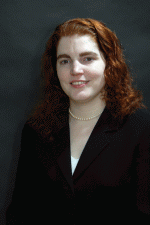Here’s a curious press release I received today:
Chamber Supports District 150’s Difficult Decisions
Peoria (January 23, 3009) –District 150 has some difficult decisions ahead due to significant budget deficit predictions. The Peoria Area Chamber of Commerce supports the district’s efforts to make those tough changes for the future of our educational system.
Members of the school board and the Chamber board met this morning at the Heartland Partnership office to discuss the status of District 150. Superintendant [sic] Ken Hinton said the district ended the 2007-2008 school year last July with a very small surplus (for the first time in nine years) of $300,000 on a budget of $140+ million.
They approved a balanced budget that same July for the 2008-2009 school year but almost overnight, the economic downturn set in and now there is a projected $9 million budget deficit for the 2010 school year due to a variety of funding changes.
Hinton acknowledges that some very tough choices will have to be made including whether to close or merge schools. While that is not a popular topic among many in the community, Chamber Board Chairperson Deb Ritschel says change is inevitable.
“We must focus on the long term effects this decision will have and the overall big picture.” Ritschel went on to say “Many people are emotional about the thought of closing or merging schools, but we have also [sic] look at the realities and focus on the business perspective of this issue which means dealing with capacity issues and matching revenues and expenses.” The goal, Ritschel noted, is to balance the business side of things while continuing focus on student achievement.
The Chamber Board was asked to help by getting community leaders to be a voice of this effort in hopes of changing the perception of the public schools in Peoria. Ritschel responded saying “The Chamber will support the district as it positions itself to ensure children today and children in the future have a stable school system providing a quality education.”
This raises a number of questions, so I’ll just start rattling them off: Which school board members met with the Chamber of Commerce? Was the Open Meetings Act followed (i.e., was the meeting properly noticed)? Who initiated the meeting, District 150 or the Chamber? Why?
And what is it with the tortured language of this press release? I’m having a hard time figuring out exactly what they’re trying to communicate. Can anyone explain to me what these two statements mean?
- “The Peoria Area Chamber of Commerce supports the district’s efforts to make those tough changes for the future of our educational system.” There’s bureaucratic doubletalk if I ever heard it. What they’re literally saying is this: They’re not supporting any specific decisions, but just generally supporting the district’s efforts to make “tough decisions.” Way to go out on a limb. For the record, I support elected bodies’ efforts to make tough decisions, too. In fact, I support everyone’s efforts to make tough decisions. I mean, we all face tough decisions at some point in our lives, and, darn it, I support your efforts to make them.
- “The Chamber Board was asked to help by getting community leaders to be a voice of this effort in hopes of changing the perception of the public schools in Peoria.” What exactly do they want community leaders to do here? Inform the community that District 150 is trying to “balance the business side of things while continuing focus on student achievement”? (I think we sort of expect that out of District 150; I mean, that is their job, is it not?) Or “[support] the district’s efforts to make those tough changes”? (See the previous bullet point.)
More questions: How many of these Chamber Board members have children who are attending District 150 schools? How many of these Chamber Board members currently operate a business that “match[es] revenues and expenses” (i.e., has a balanced budget)? (Hint: we know one who doesn’t.)
Perhaps the biggest question is, shouldn’t the district be more interested in getting the parents’ support than the Chamber’s?

 From a news release:
From a news release: